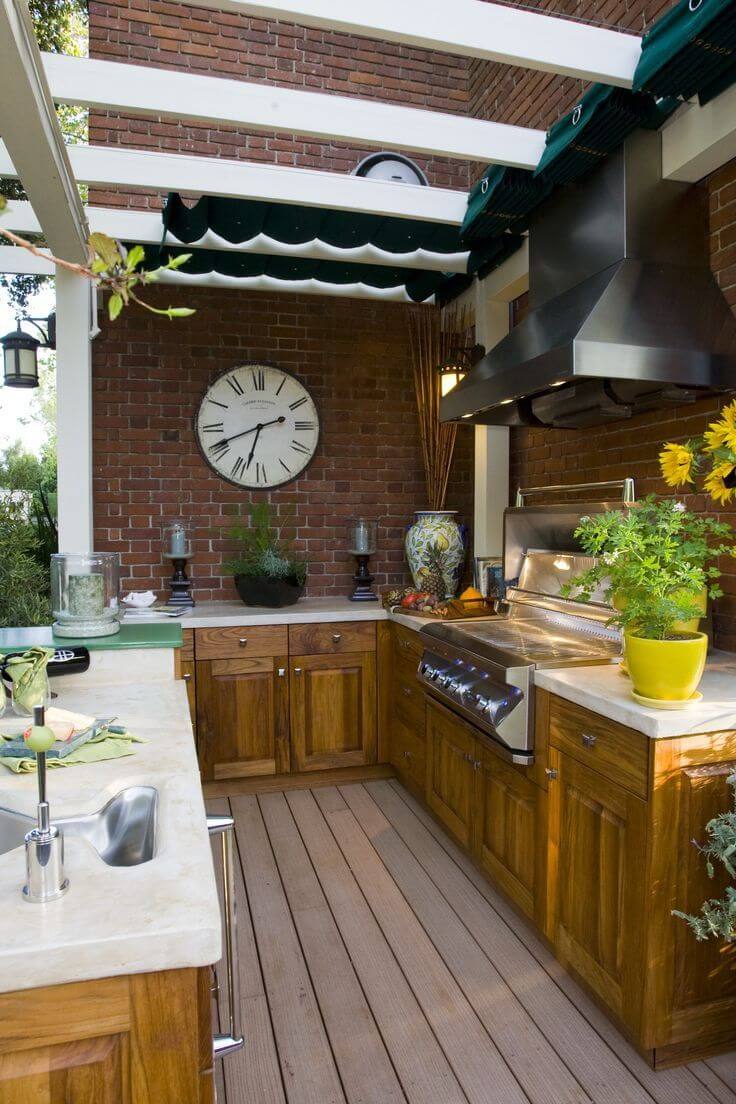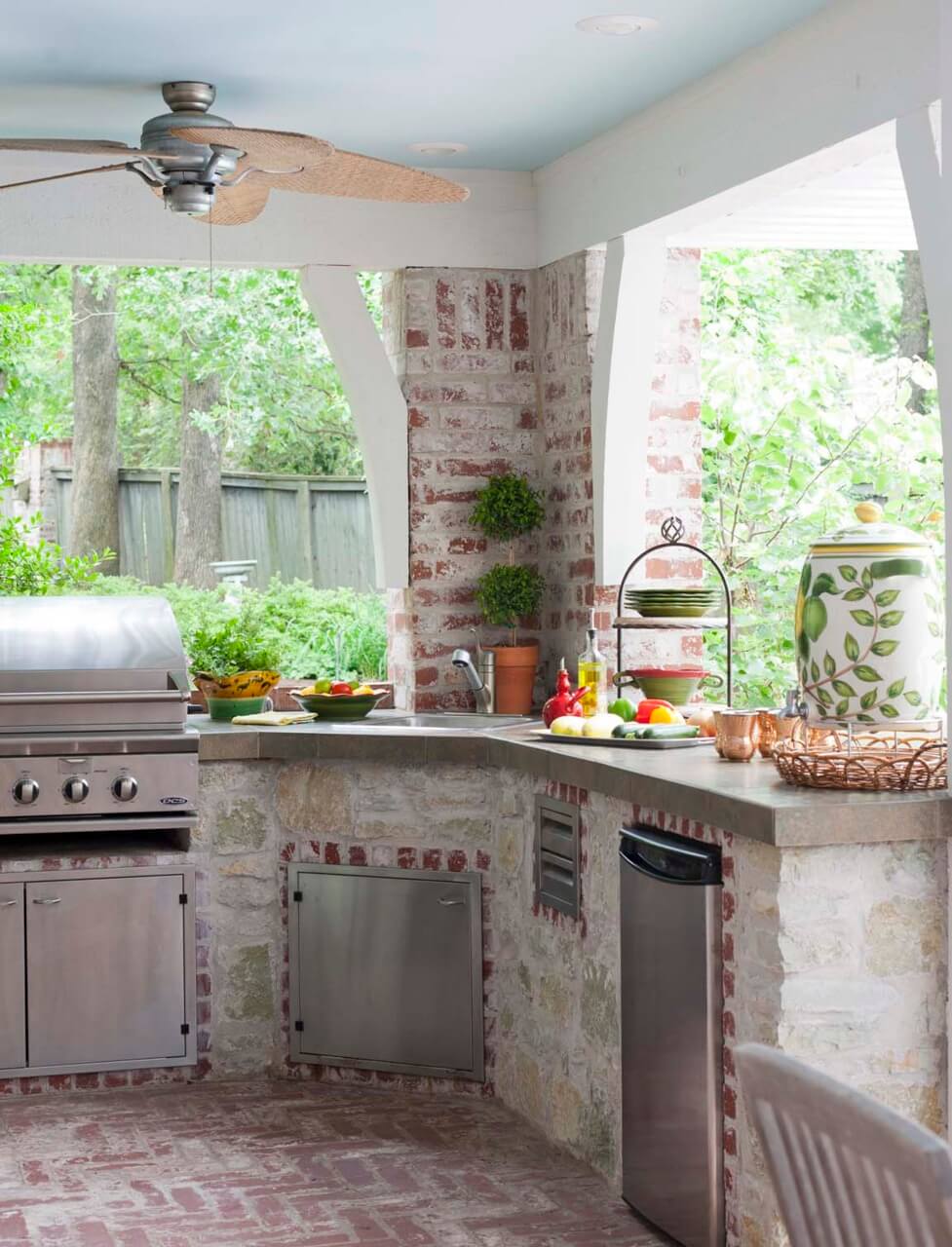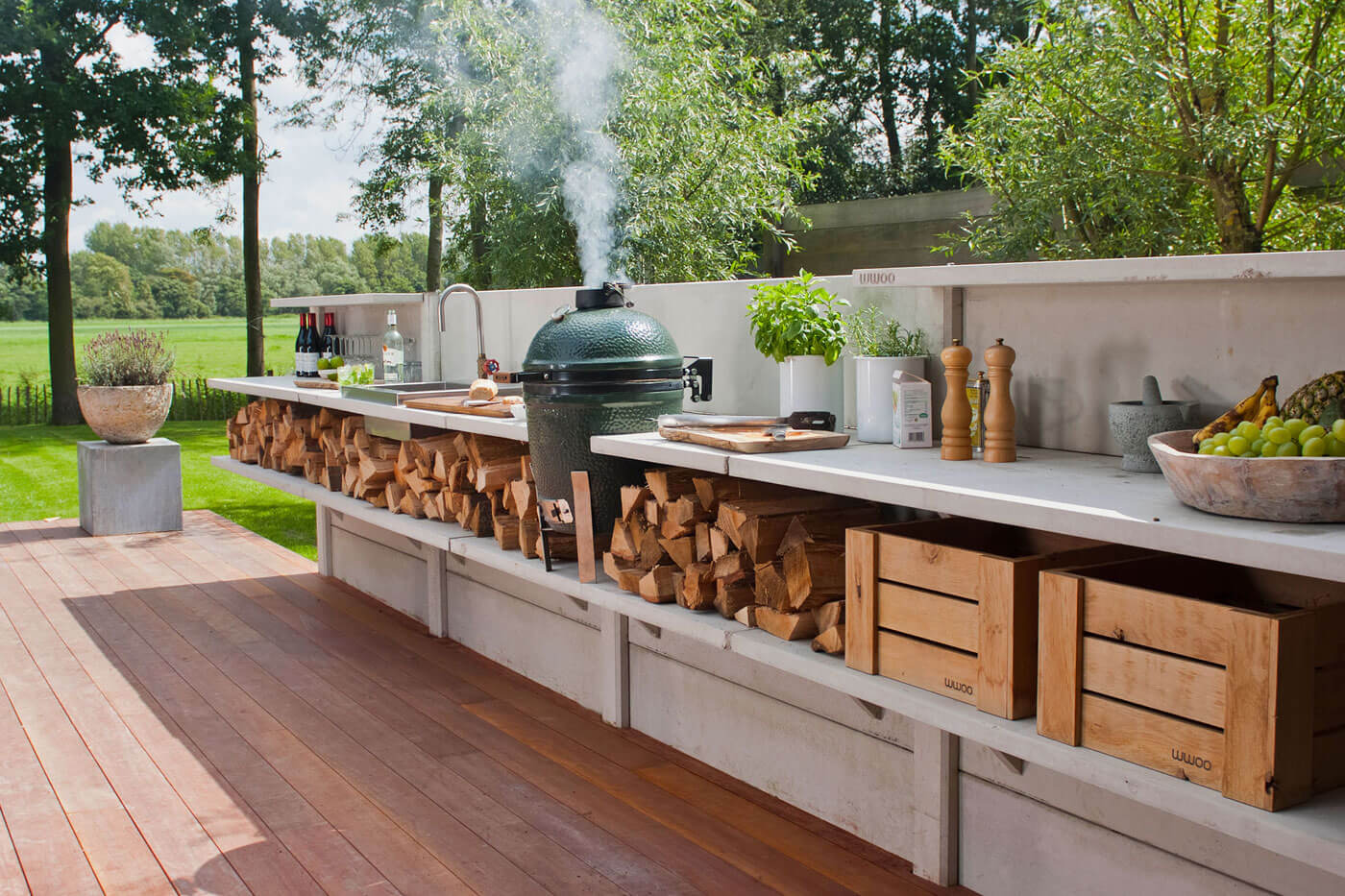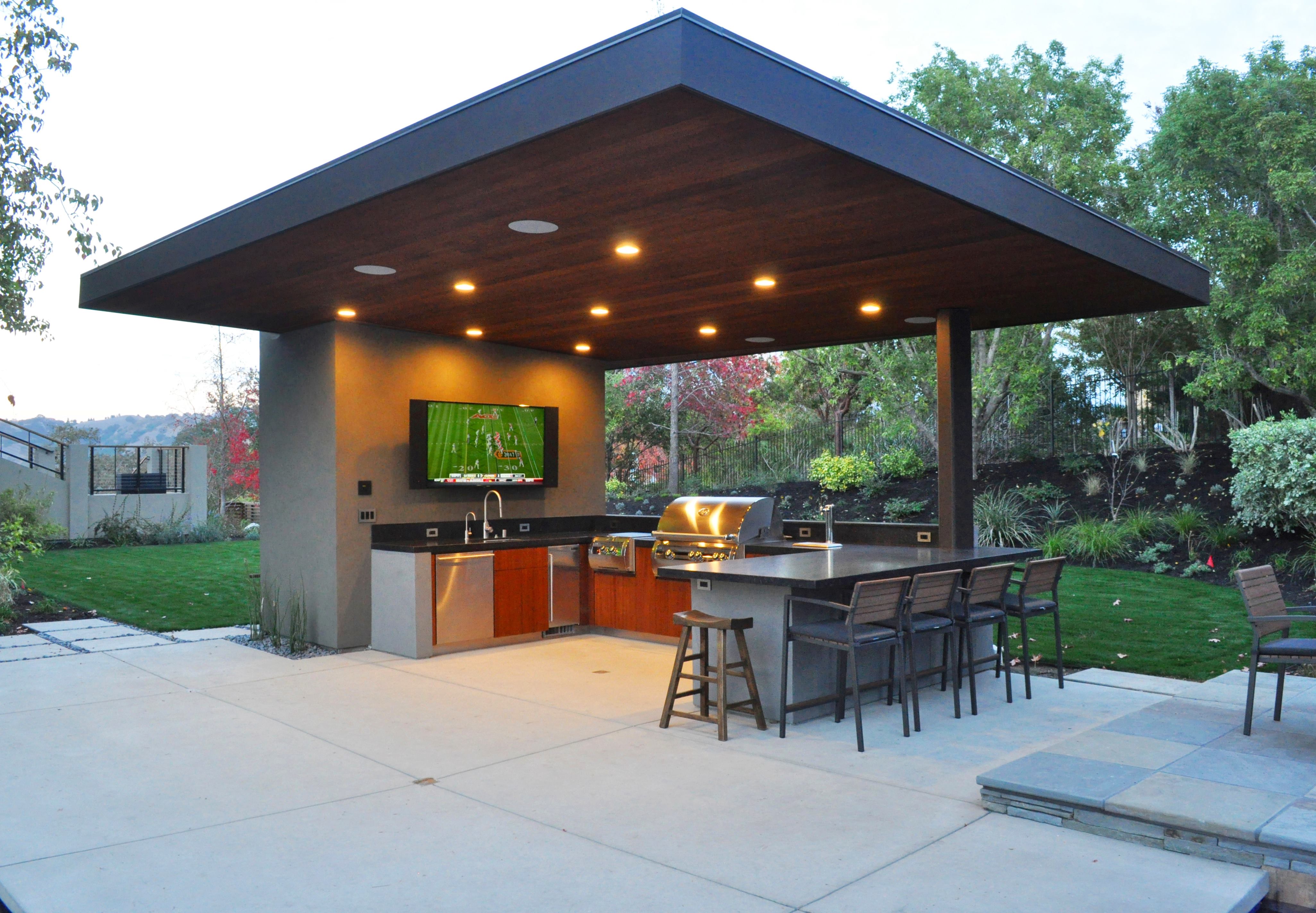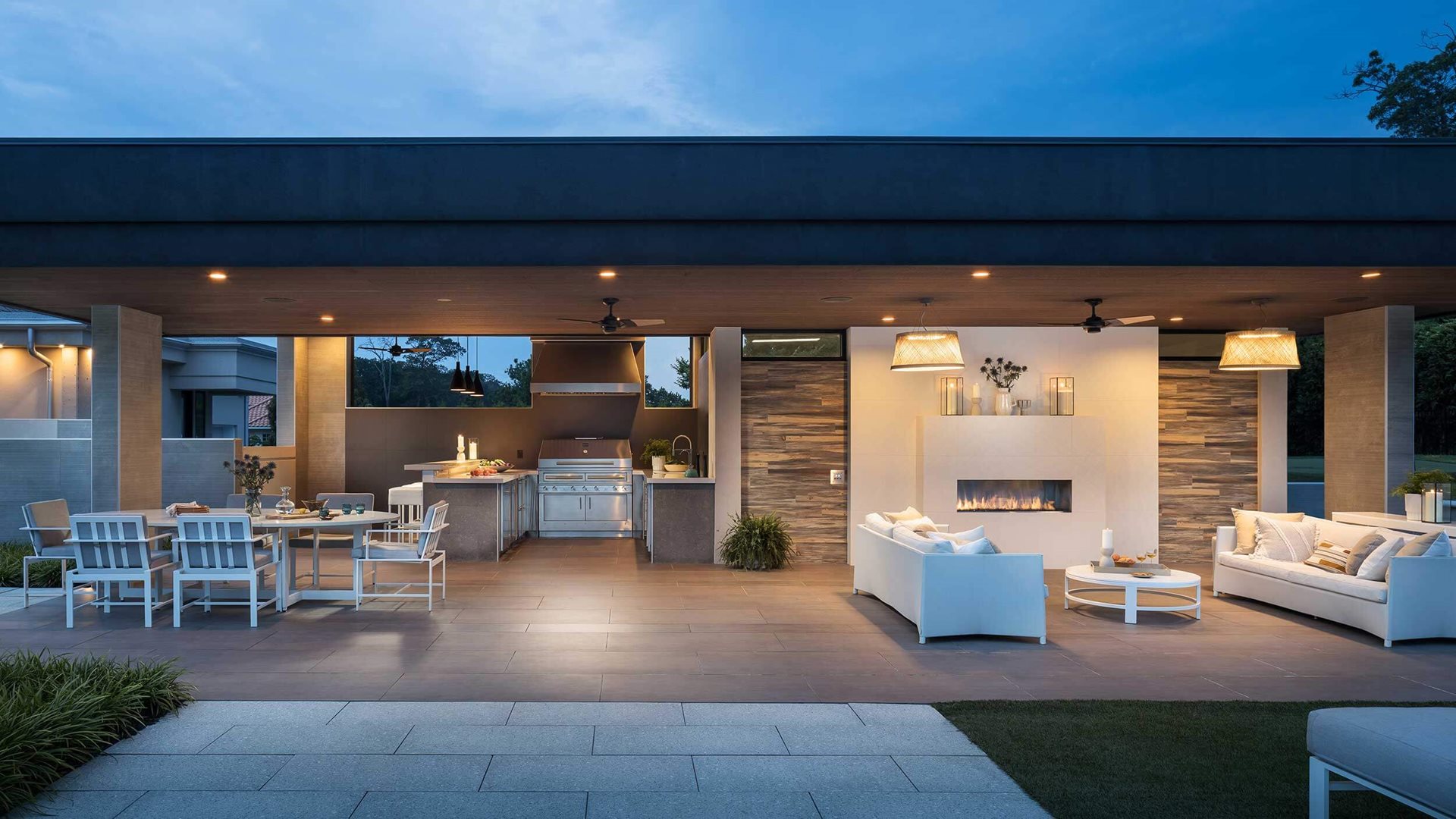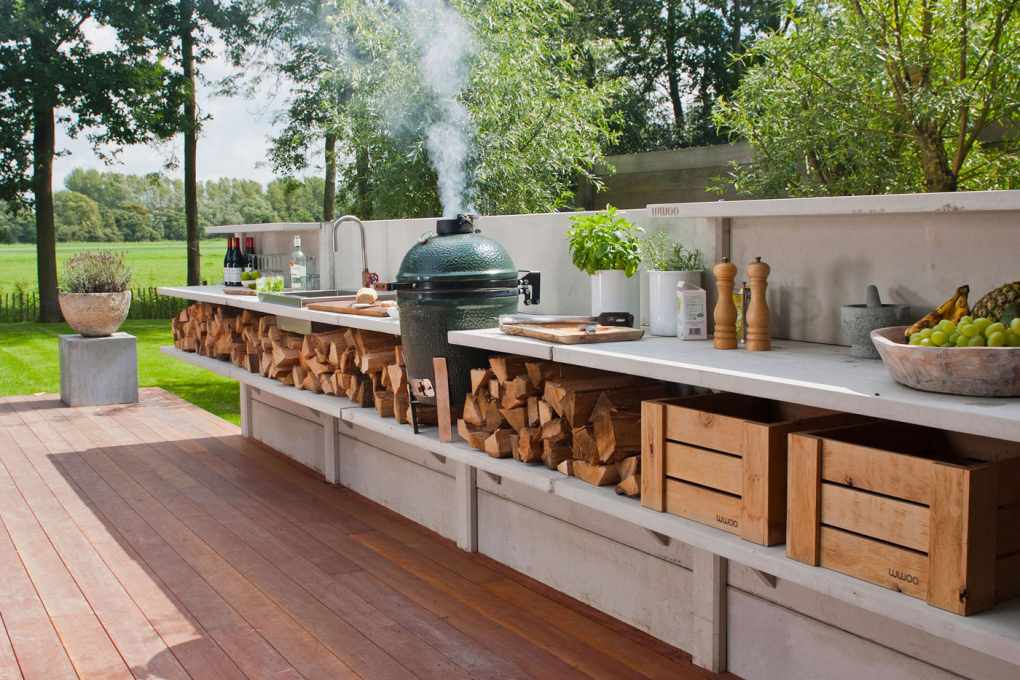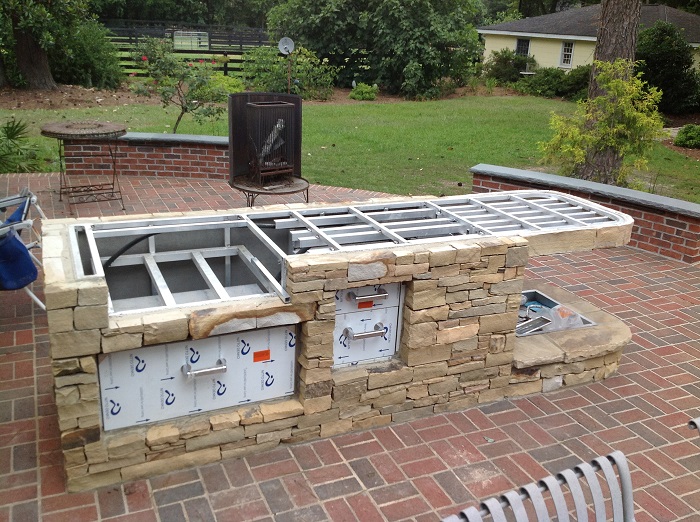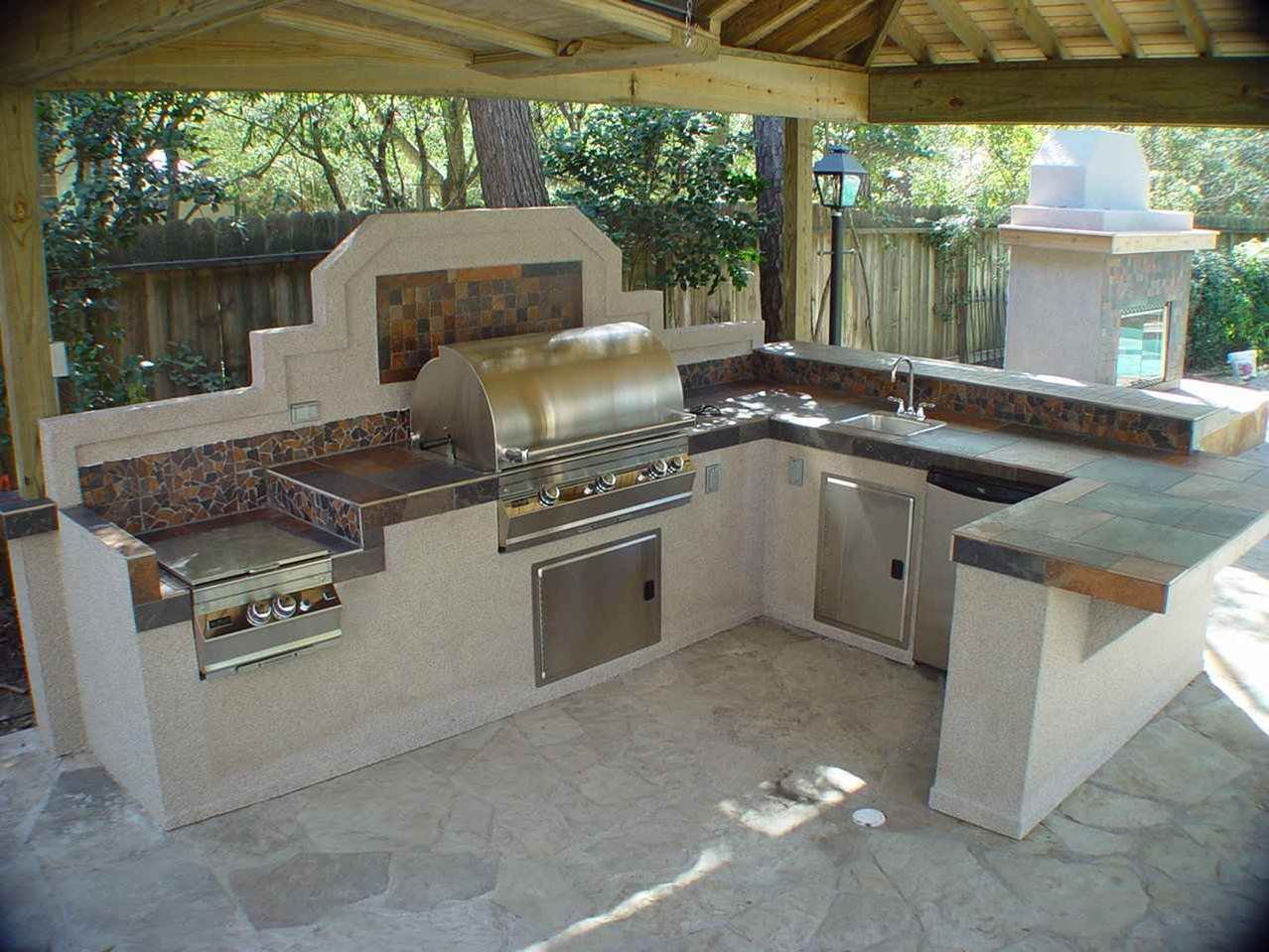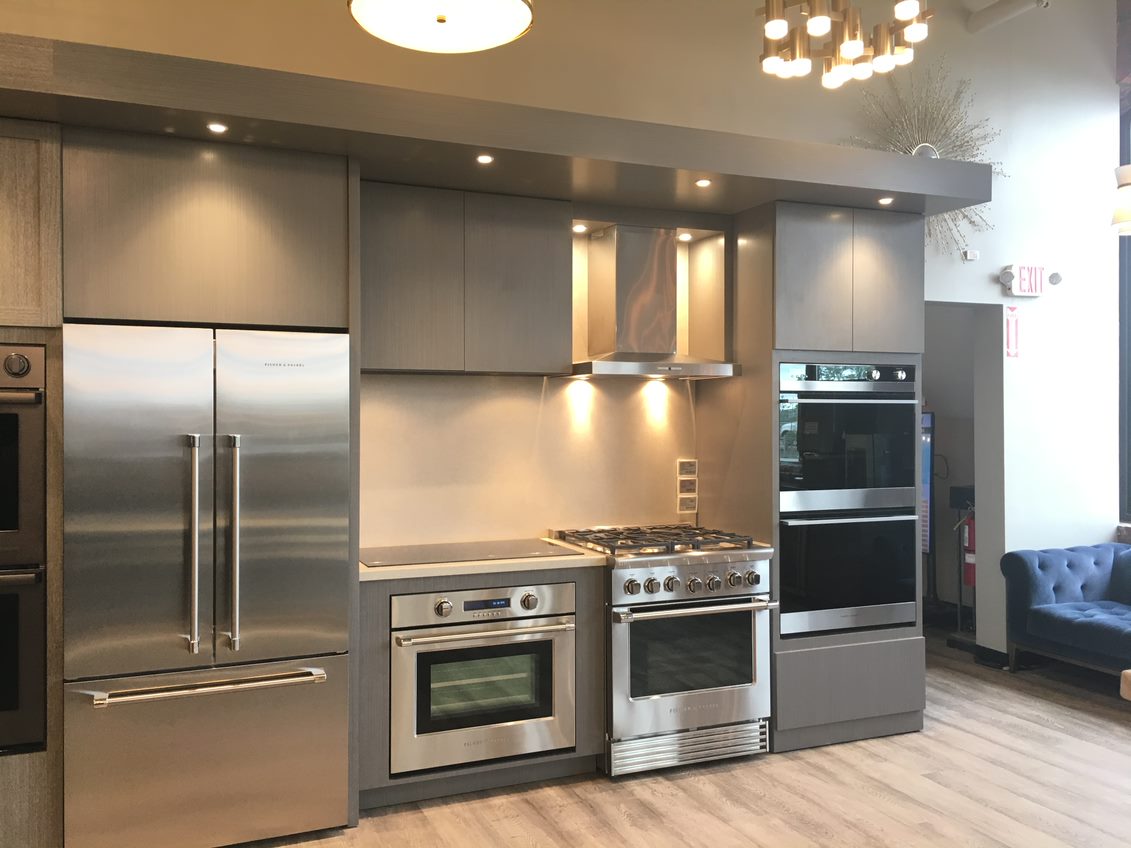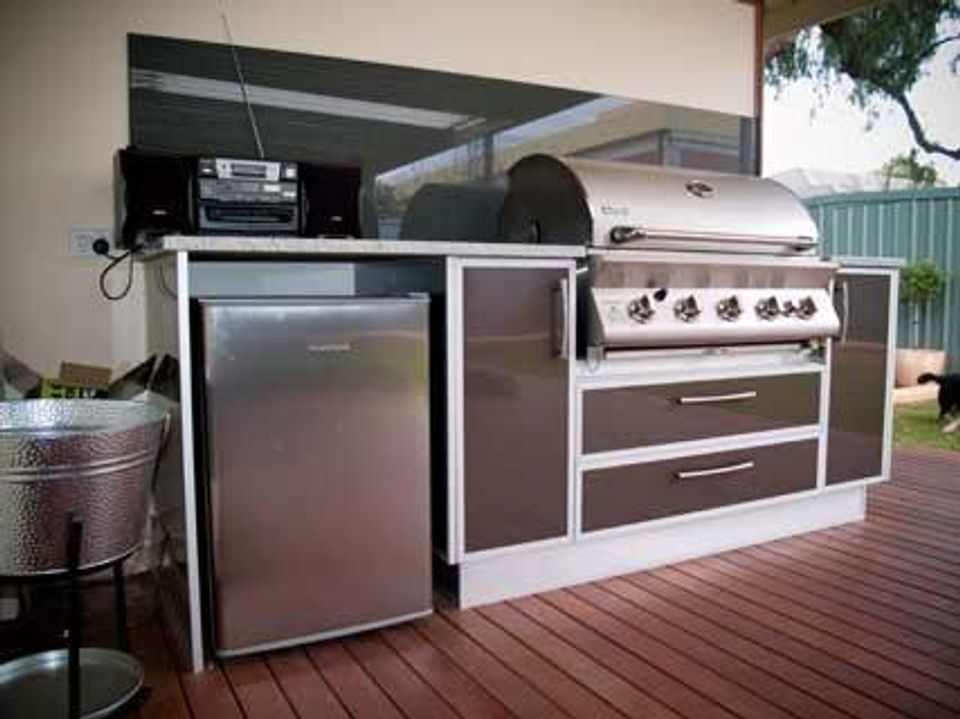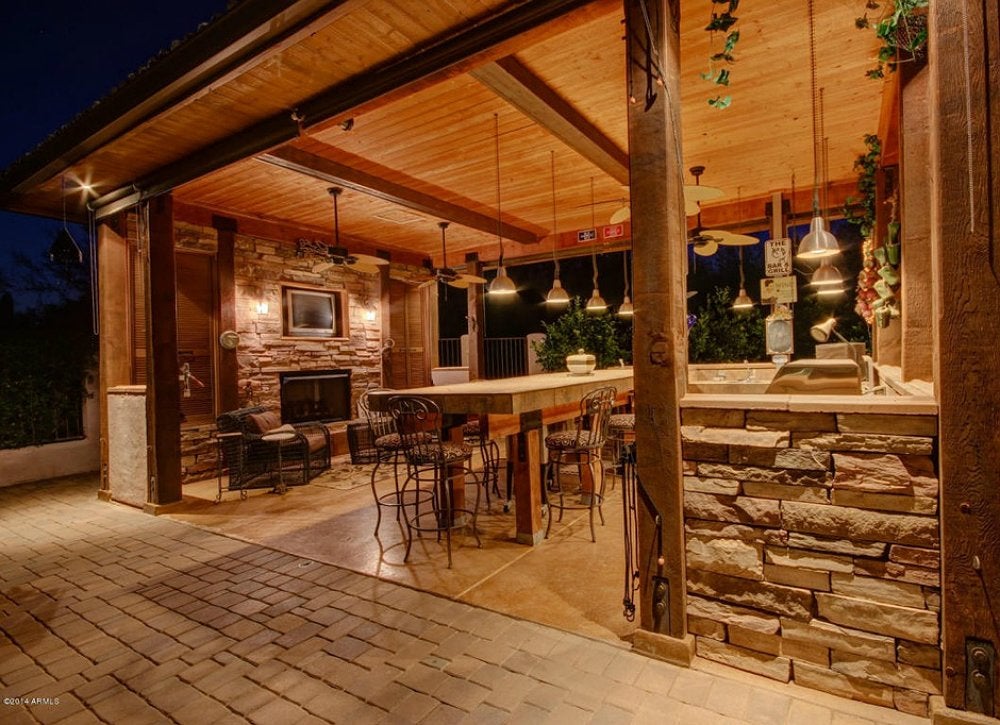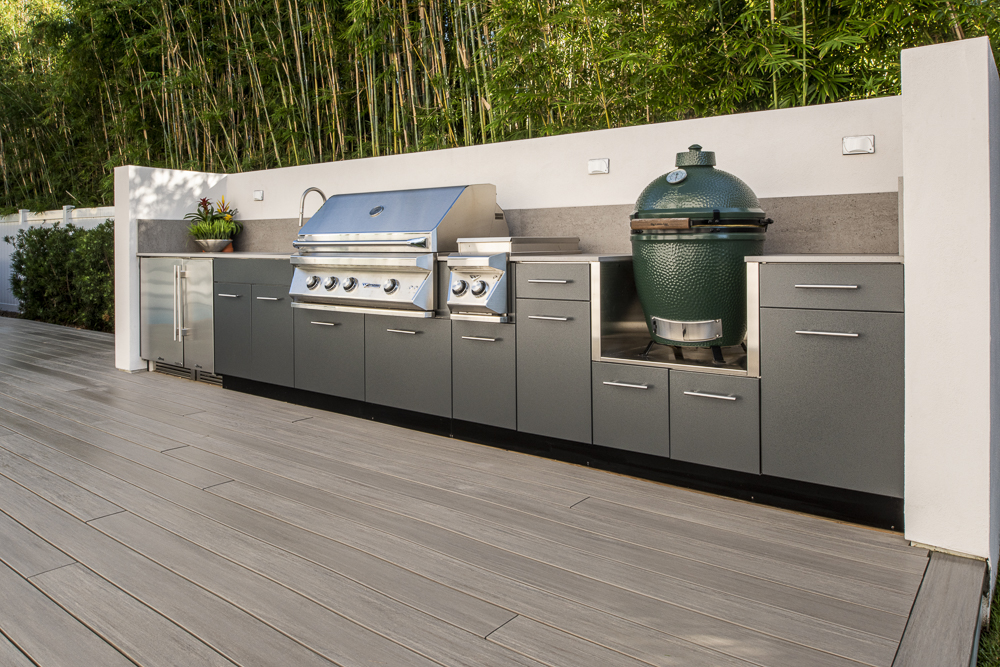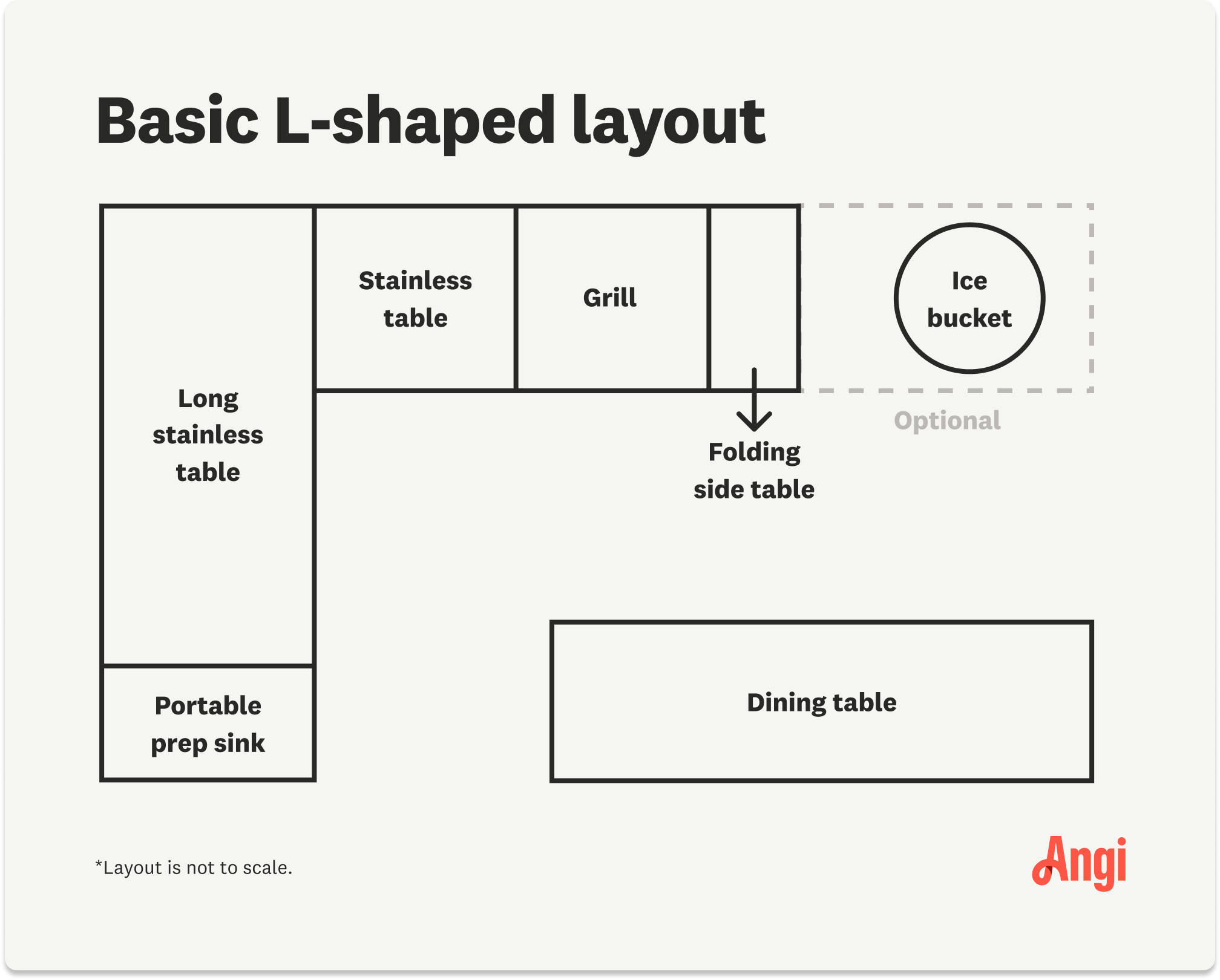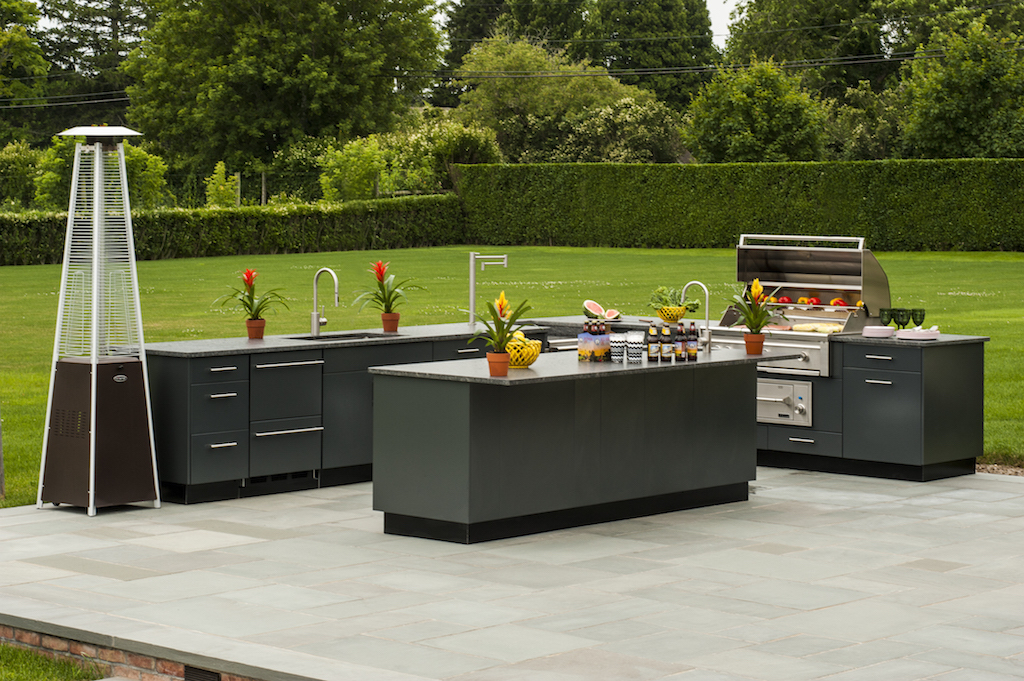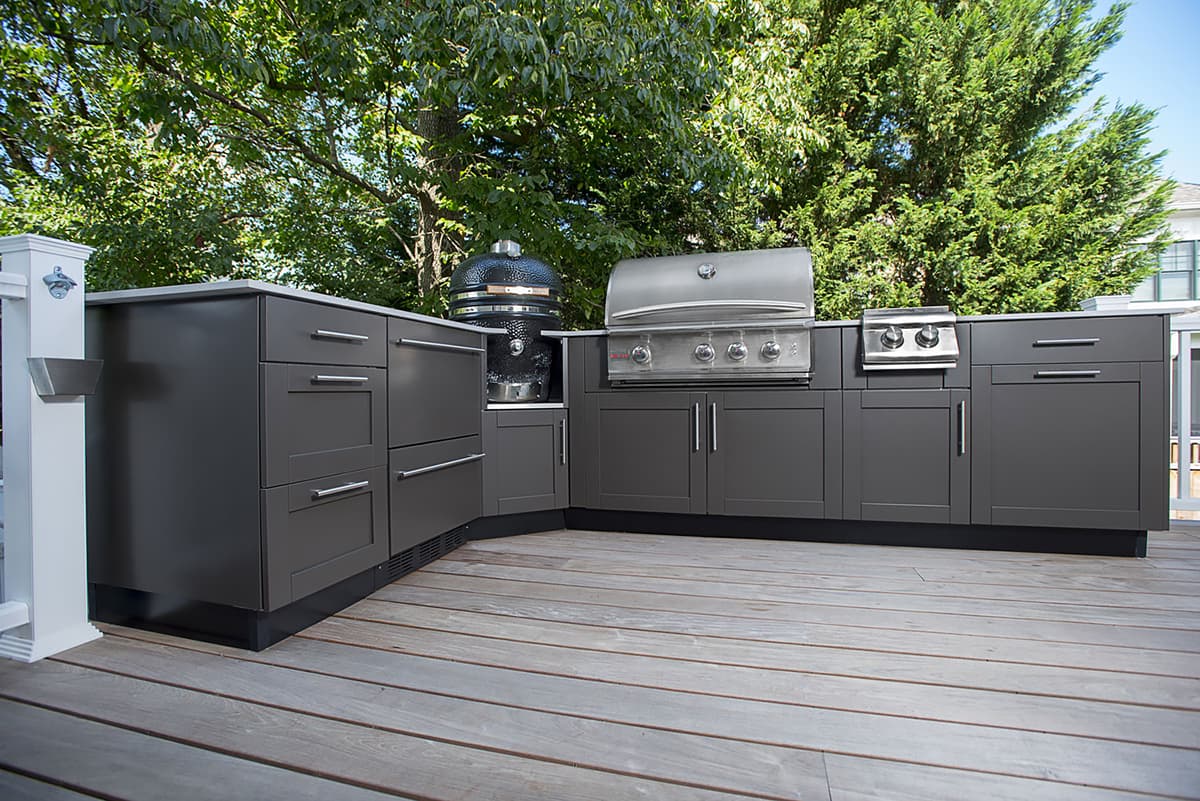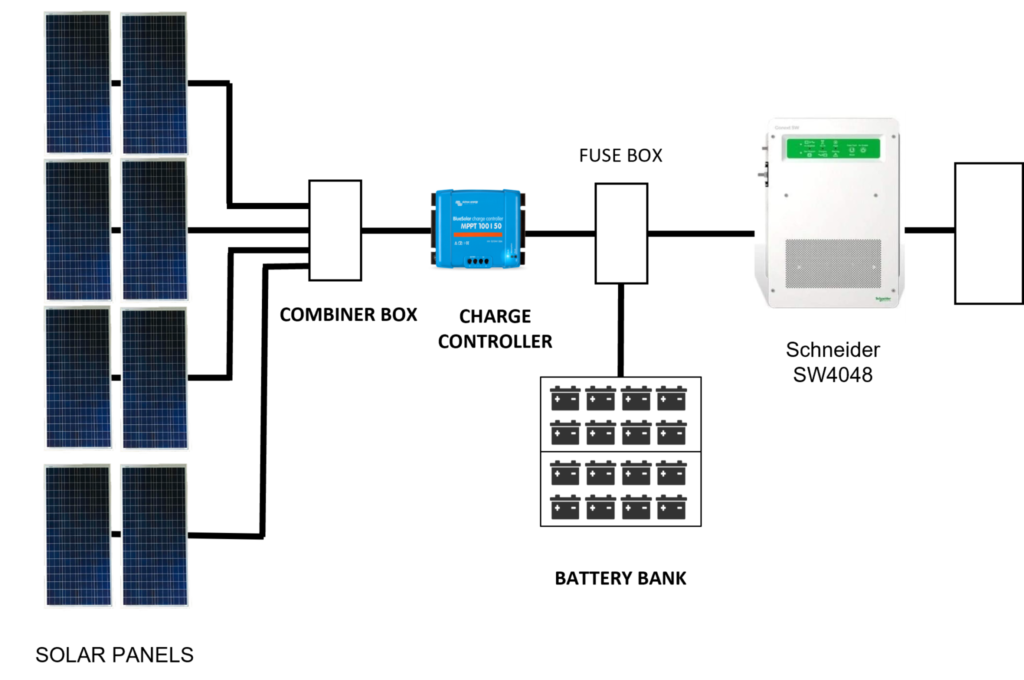Living off-grid means being self-sufficient and reducing our carbon footprint. And what better way to embrace this lifestyle than by creating a sustainable outdoor kitchen? By using eco-friendly materials and incorporating energy-efficient appliances, you can have a stylish and functional off-grid kitchen that is kinder to the environment. One of the key elements of sustainable outdoor kitchen design is utilizing natural materials. This can include using reclaimed wood for countertops and cabinets, stone for flooring, and bamboo for utensils and serving ware. These materials not only add a rustic charm to your kitchen but also reduce the need for new resources. Another important aspect is incorporating renewable energy sources. Solar panels are a popular choice for off-grid living, providing clean and reliable energy. You can use this energy to power your appliances and lighting, making your outdoor kitchen truly self-sufficient.1. Sustainable Outdoor Kitchen Design Ideas for Off-Grid Living
The first step to creating an off-grid outdoor kitchen is to determine your needs and budget. This will help you decide on the size, layout, and materials for your kitchen. It's important to plan carefully and consider factors like weather, terrain, and available resources. Next, you'll need to choose the location for your kitchen. It should be close to your home for convenience but also have enough space for cooking and entertaining. You may also want to consider the orientation of your kitchen to take advantage of natural light and ventilation. Once you have a plan in place, it's time to start building! Remember to use eco-friendly materials and consider incorporating a rainwater collection system for your sink and cooking needs. You can also add a composting bin for food waste, completing the sustainable cycle.2. How to Create an Off-Grid Outdoor Kitchen
While the design and layout of your outdoor kitchen will depend on your personal preferences and needs, there are a few essentials that every off-grid kitchen should have. These include a cooking surface, such as a grill or cooktop, a sink with running water, and storage space for utensils, dishes, and cooking supplies. You may also want to consider adding a refrigerator or cooler to keep food fresh, especially if you plan on entertaining or cooking for larger groups. A food prep area, such as a countertop or island, is also important for preparing meals and hosting guests. Don't forget about lighting! Solar-powered lights or candles can add a cozy ambiance to your outdoor kitchen while also providing functional lighting for cooking and dining after dark.3. Off-Grid Outdoor Kitchen Essentials
Designing an off-grid outdoor kitchen can be a fun and creative process, but it also requires some practical considerations. Here are a few tips and tricks to keep in mind: • Think about the flow: Your outdoor kitchen should be designed with a natural flow, making it easy to move between different areas like cooking, serving, and dining. • Include plenty of storage: Keep your outdoor kitchen organized by incorporating ample storage space for utensils, dishes, and cooking supplies. This will also prevent clutter and make it easier to keep your kitchen clean. • Consider the weather: Depending on where you live, you may need to plan for extreme weather conditions like strong winds, heavy rain, or extreme heat. This can affect the materials and layout of your kitchen, so be sure to do your research beforehand.4. Designing an Off-Grid Outdoor Kitchen: Tips and Tricks
When it comes to appliances for your off-grid outdoor kitchen, less is more. You want to choose energy-efficient options that will not only reduce your environmental impact but also save you money in the long run. Here are a few suggestions: • Solar-powered refrigerator: A solar-powered refrigerator is a great investment for your off-grid kitchen. It uses the energy from solar panels to keep food and drinks cold without the need for electricity. • Propane grill or cooktop: Propane is a clean-burning fuel that is readily available and perfect for outdoor cooking. A propane grill or cooktop is a versatile option for your off-grid kitchen, allowing you to prepare a wide range of meals. • Compostable or reusable dishes and utensils: Instead of using disposable plastic items, opt for compostable or reusable dishes and utensils. This will reduce waste and minimize your impact on the environment.5. The Best Appliances for an Off-Grid Outdoor Kitchen
The layout of your off-grid outdoor kitchen will depend on the available space and your personal preferences. Here are a few layout ideas to consider: • L-shaped: This layout is ideal for small spaces and provides a natural flow from cooking to serving to dining. • U-shaped: A U-shaped layout allows for plenty of counter space and storage while creating a cozy and intimate dining area. • Island: An island layout is perfect for larger spaces and can serve as a focal point for your outdoor kitchen. It also provides additional seating for guests.6. Off-Grid Outdoor Kitchen Layout Ideas
If you're handy with tools and want to save some money, DIY off-grid outdoor kitchen plans are a great option. You can find plenty of plans and tutorials online, or you can create your own custom design. Just be sure to use high-quality materials and follow safety guidelines. DIY outdoor kitchen plans can range from simple and budget-friendly to more elaborate and expensive, so choose one that fits your skill level and budget. You can also add your own personal touches to make it unique and truly yours.7. DIY Off-Grid Outdoor Kitchen Plans
The materials you choose for your off-grid outdoor kitchen should be durable, sustainable, and able to withstand outdoor elements. Here are some ideas to consider: • Countertops: Natural stone, concrete, or reclaimed wood are all great options for countertops. They are durable and add a rustic charm to your outdoor kitchen. • Flooring: Stone, brick, or concrete are low-maintenance and durable choices for outdoor kitchen flooring. You can also use gravel or mulch for a more natural look. • Cabinets and storage: Reclaimed wood, stone, or metal can be used to create functional and stylish cabinets and storage space for your outdoor kitchen.8. Off-Grid Outdoor Kitchen Materials and Construction
As mentioned earlier, solar panels are a popular and efficient way to power an off-grid outdoor kitchen. However, there are other options to consider, such as wind turbines or hydroelectric generators if you have a nearby water source. You can also use a combination of renewable energy sources to power your kitchen, depending on your location and resources. Just be sure to size your system correctly and have a backup power source in case of emergencies.9. How to Power an Off-Grid Outdoor Kitchen
Maintaining an off-grid outdoor kitchen is essential for its longevity and functionality. Here are a few tips to keep in mind: • Clean regularly: Keep your outdoor kitchen clean and free of debris to prevent damage and maintain a hygienic cooking environment. • Check for damage: Regularly inspect your kitchen for any signs of wear and tear, such as cracks, rust, or loose fittings. Address any issues promptly to prevent further damage. • Winterize: If you live in a climate with harsh winters, be sure to winterize your outdoor kitchen to protect it from the elements. This can include covering or storing appliances and sealing any cracks or openings. Creating an off-grid outdoor kitchen is not only a practical and sustainable option but also a fun and fulfilling project. With careful planning, the right materials, and a bit of creativity, you can have a beautiful and functional outdoor kitchen that reflects your off-grid lifestyle.10. Off-Grid Outdoor Kitchen Maintenance and Upkeep
The Benefits of an Off-Grid Outdoor Kitchen Design
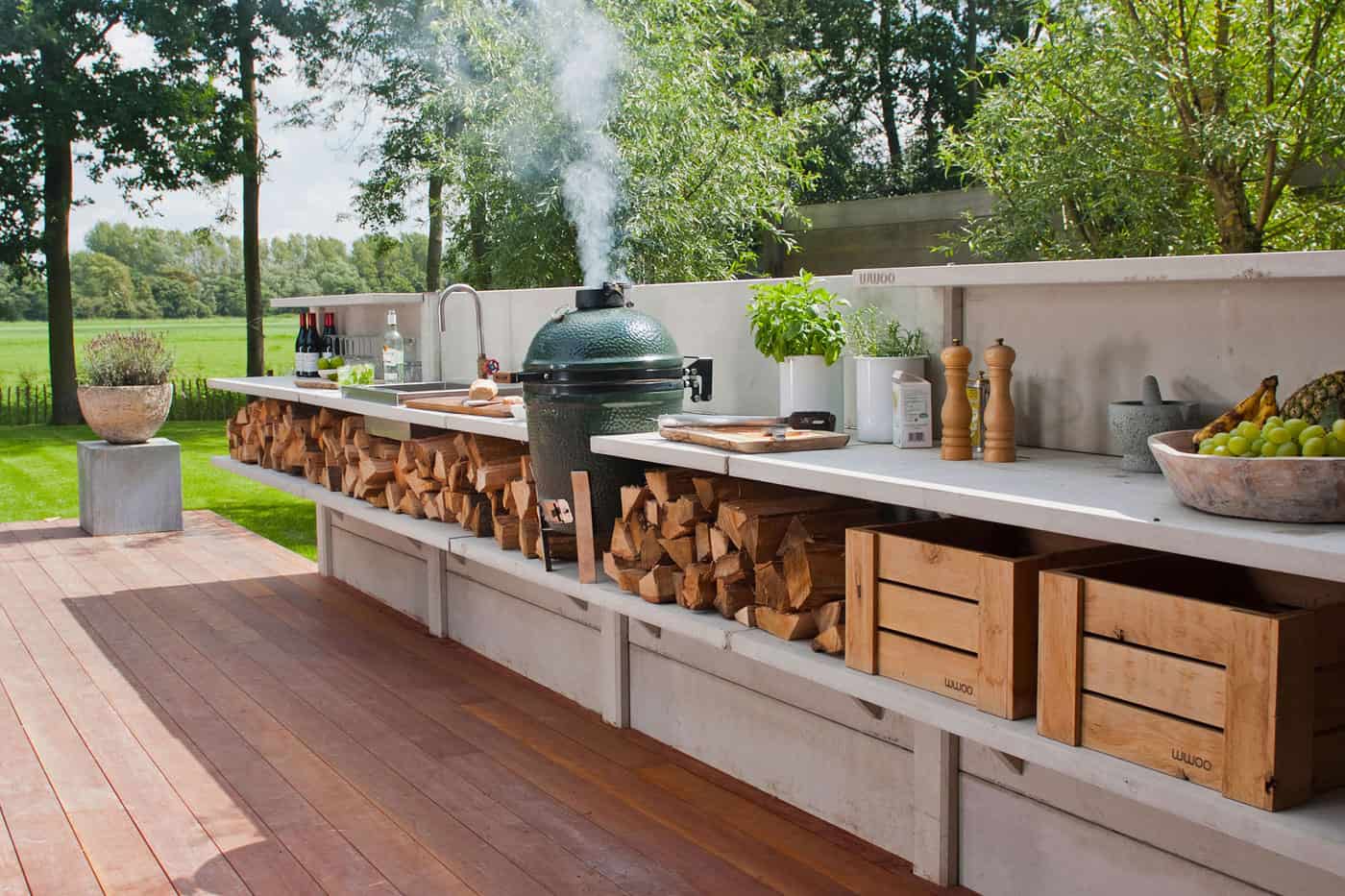
Sustainability and Self-Sufficiency
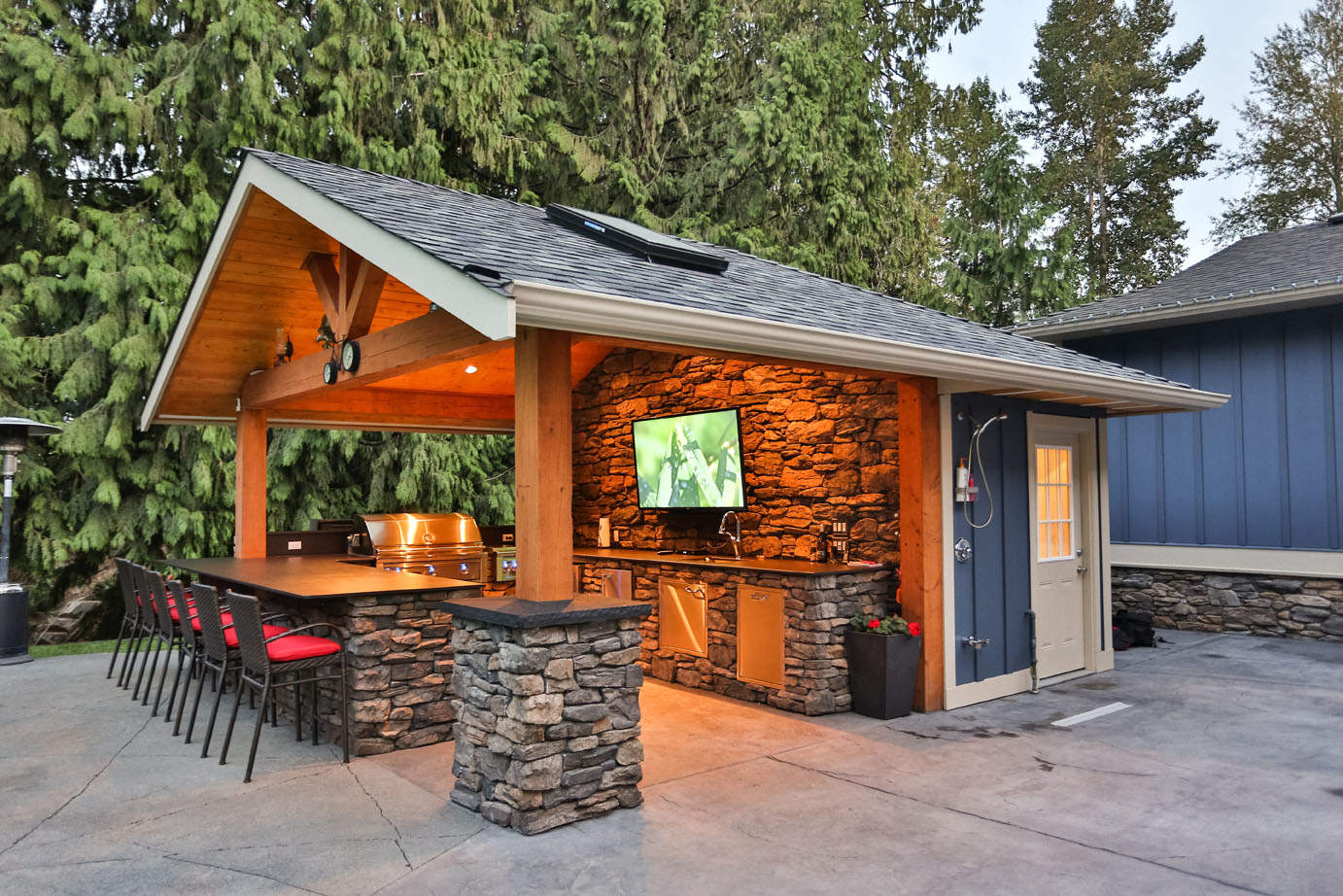 Off-grid outdoor kitchen designs
offer a sustainable and self-sufficient way of living. By utilizing natural resources such as solar energy and rainwater, homeowners can reduce their carbon footprint and live off the grid. This not only benefits the environment but also allows individuals to become more self-reliant. In today's world, where resources are becoming scarce and energy costs are rising, an off-grid outdoor kitchen is a practical solution for those looking to lead a more sustainable lifestyle.
Off-grid outdoor kitchen designs
offer a sustainable and self-sufficient way of living. By utilizing natural resources such as solar energy and rainwater, homeowners can reduce their carbon footprint and live off the grid. This not only benefits the environment but also allows individuals to become more self-reliant. In today's world, where resources are becoming scarce and energy costs are rising, an off-grid outdoor kitchen is a practical solution for those looking to lead a more sustainable lifestyle.
Increased Functionality and Versatility
 Not only are
off-grid outdoor kitchens
environmentally friendly, but they also provide increased functionality and versatility in house design. Traditional indoor kitchens are limited in terms of space and design, often leading to a cramped and cluttered cooking experience. With an outdoor kitchen, homeowners have the freedom to design a larger and more open space that can accommodate various cooking methods, such as grilling, smoking, and wood-fired ovens. This allows for a more enjoyable and spacious cooking experience, perfect for entertaining guests or simply enjoying a meal outside.
Not only are
off-grid outdoor kitchens
environmentally friendly, but they also provide increased functionality and versatility in house design. Traditional indoor kitchens are limited in terms of space and design, often leading to a cramped and cluttered cooking experience. With an outdoor kitchen, homeowners have the freedom to design a larger and more open space that can accommodate various cooking methods, such as grilling, smoking, and wood-fired ovens. This allows for a more enjoyable and spacious cooking experience, perfect for entertaining guests or simply enjoying a meal outside.
Aesthetic Appeal
 In addition to their practicality and functionality, off-grid outdoor kitchens also add a unique aesthetic appeal to a home's design. The natural elements incorporated in the design, such as wood, stone, and plants, create a rustic and inviting atmosphere. This not only enhances the overall appearance of the house but also creates a peaceful and relaxing outdoor dining experience. With the right design, an off-grid outdoor kitchen can become the focal point of a backyard, making it the perfect place for hosting gatherings and creating lasting memories with loved ones.
In addition to their practicality and functionality, off-grid outdoor kitchens also add a unique aesthetic appeal to a home's design. The natural elements incorporated in the design, such as wood, stone, and plants, create a rustic and inviting atmosphere. This not only enhances the overall appearance of the house but also creates a peaceful and relaxing outdoor dining experience. With the right design, an off-grid outdoor kitchen can become the focal point of a backyard, making it the perfect place for hosting gatherings and creating lasting memories with loved ones.
Economic Benefits
 An off-grid outdoor kitchen can also provide economic benefits for homeowners. By reducing energy and water usage, individuals can save on utility costs in the long run. Additionally, growing herbs and vegetables in a kitchen garden can lead to savings on grocery expenses. Moreover, an outdoor kitchen can also increase the value of a home, making it a wise investment for homeowners.
In conclusion, an off-grid outdoor kitchen design offers a sustainable, versatile, aesthetically appealing, and economically beneficial solution for house design. By incorporating natural elements, utilizing renewable resources, and providing a functional and spacious cooking area, this type of kitchen design is becoming increasingly popular. Whether one is looking to reduce their environmental impact, increase their self-sufficiency, or simply upgrade their home's design, an off-grid outdoor kitchen is a practical and attractive option to consider.
An off-grid outdoor kitchen can also provide economic benefits for homeowners. By reducing energy and water usage, individuals can save on utility costs in the long run. Additionally, growing herbs and vegetables in a kitchen garden can lead to savings on grocery expenses. Moreover, an outdoor kitchen can also increase the value of a home, making it a wise investment for homeowners.
In conclusion, an off-grid outdoor kitchen design offers a sustainable, versatile, aesthetically appealing, and economically beneficial solution for house design. By incorporating natural elements, utilizing renewable resources, and providing a functional and spacious cooking area, this type of kitchen design is becoming increasingly popular. Whether one is looking to reduce their environmental impact, increase their self-sufficiency, or simply upgrade their home's design, an off-grid outdoor kitchen is a practical and attractive option to consider.
